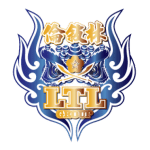Lion dance holds a prominent role in Chinese New Year festivities, gracing temples, restaurants, businesses, and cultural festivals. Beyond its association with the New Year, this vibrant performance is a cherished tradition at housewarmings, weddings, and birthdays, believed to usher in good luck.
A duo of adept performers skillfully emulate the movements of a resplendent, brightly hued lion. The lion’s majestic head shakes vigorously, revealing formidable teeth and flashing eyes. This spirited display, marked by agility, serves the purpose of energetically dispelling malevolent spirits, paving the way for the influx of prosperity and good fortune.
The lion dance unfolds with a synchronized accompaniment of talented musicians wielding traditional instruments like drums, cymbals, and gongs. Their harmonious melodies and rhythmic beats create an enchanting symphony of light and sound, enhancing the spectacle as the lion gracefully performs.
Executing the intricate lion dance demands intricate footwork from the two performers—the one manipulating the head and the other, the tail. Their strength and agility shine as they showcase not only the playful nature of the lion but also its majestic power and strength, presenting a compelling acrobatic exhibition.


